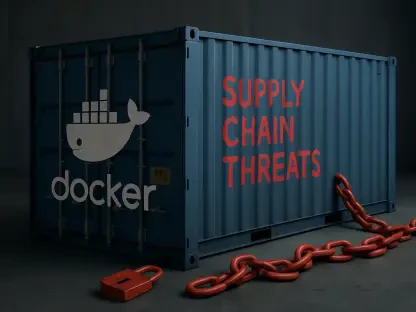In today’s fast-paced digital landscape, where collaboration and data exchange are paramount, the way files are shared can make or break a project, especially for media professionals who handle massive datasets daily. Enter Strada, an innovative web-based platform that challenges the dominance of traditional cloud storage by introducing a peer-to-peer (P2P) file transfer system. By allowing users to share files directly from their local storage rather than relying on centralized servers, Strada aims to cut costs associated with cloud subscriptions and streamline workflows. This approach could potentially transform how industries approach data sharing, offering a fresh alternative for those frustrated with the limitations and expenses of conventional methods. As the demand for efficient, cost-effective solutions grows, Strada’s model sparks curiosity about whether it can truly disrupt the status quo and redefine file sharing for modern needs.
A New Paradigm in Data Transfer
Strada’s core innovation lies in its departure from the cloud-centric model that has long defined file sharing. Most platforms require users to upload data to a remote server, where it is stored until a recipient downloads it, often incurring ongoing costs for storage space. Strada flips this script by enabling direct transfers between users through a P2P network, utilizing the storage already available on their devices. This eliminates the need for rented server space, though access to Strada’s services comes with a subscription fee, the details of which are still under wraps. For professionals juggling tight budgets, this could represent significant savings, especially in industries like media production where large files are the norm. The shift to local storage as the backbone of sharing also raises questions about scalability and adoption, but the concept alone marks a bold step toward decentralizing data exchange in a cloud-heavy world.
Beyond cost considerations, Strada offers a level of immediacy that sets it apart from many competitors. Files shared through the platform can be streamed and viewed instantly by recipients without the need for lengthy downloads, thanks to the direct connection facilitated by P2P technology. This bidirectional capability allows both senders and receivers to initiate transfers, fostering a collaborative environment that contrasts with the often rigid, one-way nature of cloud services. However, this advantage is tempered by a critical dependency on internet speed. Smaller files or proxies may transfer quickly, but larger data, such as high-resolution camera originals, can face significant delays in areas with poor connectivity. This limitation highlights that while Strada’s approach is promising, its effectiveness varies based on infrastructure, a factor that could influence its appeal across diverse user bases and geographic regions.
Tailoring Solutions for Media Workflows
Strada appears particularly well-suited to the high-speed demands of media production, where time-sensitive projects dominate. In environments like film sets, commercial shoots, or event coverage such as weddings, the platform enables editors to access files directly from a Digital Imaging Technician’s setup, pulling data to local storage for immediate use. Simultaneously, remote collaborators can view the same content in real time, mirroring the convenience of Apple’s AirDrop but without the constraint of physical proximity. This capability can significantly enhance teamwork across distances, making Strada a potential asset for projects requiring rapid turnaround. Additionally, its compatibility with Network-Attached Storage (NAS) devices allows users to tap into entire storage libraries remotely, adding a layer of versatility for professionals managing extensive archives from any location.
The platform’s design also caters to the dynamic nature of collaborative editing and content creation. By supporting real-time access and file interaction, Strada minimizes downtime that often plagues teams waiting for uploads or downloads to complete on cloud systems. This can be a game-changer for scenarios where every minute counts, such as live event coverage or tight production schedules. Yet, the reliance on specific hardware setups, including a computer and card reader, might pose logistical challenges on location, particularly in remote or less-equipped settings. While upcoming features like a mobile version and commenting tools are expected to broaden its functionality, the current framework already positions Strada as a tailored solution for media professionals seeking efficiency. The balance between innovation and practicality will likely determine how deeply it penetrates this competitive niche.
Navigating the Roadblocks to Adoption
Despite its forward-thinking design, Strada faces significant challenges that could temper its impact on the file-sharing landscape. A primary concern is its dependence on internet speed, a variable that can drastically affect performance. While transferring smaller files or proxies might be swift, handling large media assets in regions with inconsistent connectivity often results in frustrating delays. This limitation makes Strada less viable for users in underserved areas or during on-location shoots where reliable internet isn’t guaranteed. For industries that frequently deal with high-volume data, such as video production, this could be a dealbreaker unless infrastructure improvements keep pace with the platform’s ambitions. The gap between concept and real-world application remains a hurdle that Strada must address to gain widespread trust.
Security concerns further complicate Strada’s path to mainstream acceptance, especially among corporate clients with stringent data policies. Many organizations restrict P2P transfers or large browser-based data exchanges due to potential vulnerabilities, favoring traditional methods like physical hard drive deliveries or controlled upload portals. This preference for established, secure workflows could limit Strada’s penetration into enterprise settings, where data protection often trumps convenience. Additionally, competition from existing live transfer technologies used by broadcasters adds pressure, as these solutions already address similar needs for remote access and rapid sharing. Strada’s unique P2P model must prove its reliability and safety to carve out a space in a market crowded with proven alternatives, a challenge that will test its long-term viability.
Reflecting on Strada’s Potential Path Forward
Looking back, Strada carved a niche by offering a compelling alternative to cloud-based file sharing, focusing on direct, P2P transfers that leveraged local storage to cut costs and boost speed. Its ability to enable instant streaming and bidirectional collaboration stood out as a significant advantage for media professionals who thrived on real-time workflows. Integration with NAS devices and the promise of future enhancements like mobile support hinted at a broader vision for accessibility and user engagement. However, the platform grappled with practical constraints, from internet speed dependencies to security apprehensions that deterred corporate adoption, not to mention logistical demands in field settings.
Moving forward, the focus for Strada should be on addressing these pain points through targeted improvements. Enhancing performance over low-bandwidth connections, bolstering security protocols to meet enterprise standards, and simplifying on-location requirements could widen its appeal. As pricing details emerge and new features roll out, close monitoring of user feedback will be essential to refine the experience. Strada’s journey suggests a promising tool for specific workflows, but its true impact depends on adapting to diverse needs and proving itself against entrenched competitors. The next steps involve not just innovation, but strategic alignment with the realities of modern data-sharing demands.









